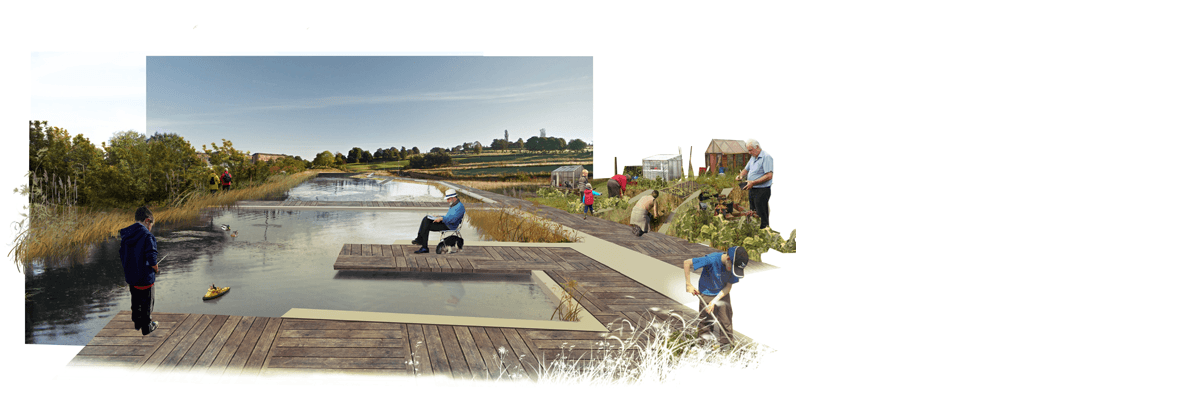
How do you use a scheduled ancient monument to support economic regeneration?
With sewer networks reaching design capacity, across North Glasgow fresh ideas for surface water management were needed to unlock future development potential and aid regeneration.

The North Glasgow Integrated Water Management System (NGIWMS) concept was developed in 2013 by AECOM to tackle this challenge. Incorporating a scheduled ancient monument, the Forth and Clyde Canal, into a sustainable surface water drainage tool we are re-thinking the way canals contribute to water management, working with Scottish Canals, Glasgow City Council and Scottish Water, as the key stakeholders from the Metropolitan Glasgow Strategic Drainage Partnership (MGSDP).
Key aspects of the concept include:

Using big data to enable real-time control
The NGIWMS concept uses remote sensors and data capture equipment to enable real-time operational management of the canal. This enables the canal to be used as an intelligent water management tool – for example prevailing weather pattern data can be linked to water level controls, ensuring there is sufficient surface water storage provided proactively, in advance of extreme weather. This is increasing network capacity and making new communities possible across Scotland’s Central belt.

Implementing best-practice in surface water management
The NGIWMS concept isn’t just limited to the canal system, it is an integrated plan – it includes opportunities for further developing approaches to surface water management and water sensitive urban design (WSUD) in surrounding developments. For example, community car washing facilities can be incorporated in local developments which use treated surface water runoff, which is then re-treated before draining to the canal network, avoiding the requirements to use potable water, but also creating a social community hub. If realised, this would allow Glasgow to be at the forefront of best practice, generating an international destination for water engineers, urban designers and planners, whilst also creating opportunities for development and application of existing and new technologies to support the Scottish Government’s Hydro-Nation aspirations. .

Water quality monitoring
Active monitoring of water quality within, and upstream of, the canal network followed by active treatment of surface water runoff will ensure the canal environment is protected.

“The NGIWMS has provided an innovative, technically focused concept to enable Scottish Canals to exploit the wider value of the canal network and associated infrastructure. This will support regionally important development and regeneration and develop a more holistic approach to water management, whilst creating drainage provision at a cost which is an order of magnitude lower than traditionally engineered solutions.”
Katie Hughes
Director of Estates and Commerce, Scottish Canals

The concept is supporting the development and regeneration of 260ha of land, which is otherwise constrained due to lack of drainage capacity. The project evaluated the concept and the alternative traditionally engineered solution, which would require a 2km tunnel to connect to an existing water environment, to develop a business case justification. This demonstrated that use of the existing canal infrastructure realised significant cost efficiencies compared to traditional engineering solutions.
The project has now entered the realisation stage, with implementation anticipated during 2017, allowing development connections to be made in 2018.

“The proposals for the North Glasgow Integrated Water Management System are to be commended. The MGSDP have a fantastic vision for a pioneering drainage system which, if implemented, could be held as an exemplar sustainable drainage system which promotes and enables economic regeneration and growth, social justice and the alleviation of flood risk.”
Dr Richard Allan
Head of CREW, Scotland’s Centre
